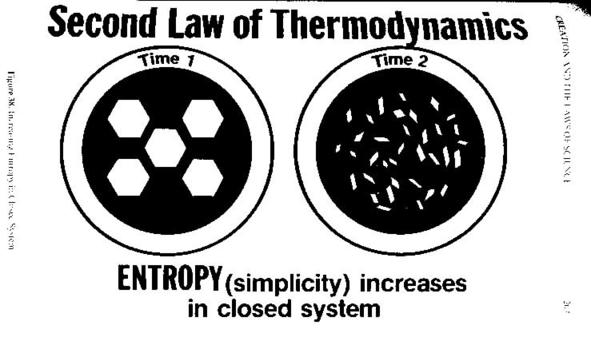Interface theory
This is the principle that emerged from the international literature on the Cultural Interface - the higher the knowledge, the greater the overlap across cultures. Notice that at lower levels of knowledge there is no cultural overlap. As an interesting tangent to this, if you think of it in scientific terms, you can see the way systems tend to simplify and fall apart when kept artificially separate and isolated, as in the second law of thermodynamics:
The Cultural Interface principle is present in Aboriginal Law as well (see lit review in the in the draft report - 8ways training page in menu at left).
The Cultural Interface is a term coined by Dr Martin Nakata, a Torres Strait Islander academic. It should be acknowledged that the information on this page is just the way we've been working with it, highlighting the reconciling potential of the theory. Nakata's work on this subject is much more sophisticated, as the Interface is far more complex than what is shown on this page (see readings below). The Interface is a highly contested site, full of contradictions and struggle and unequal power relationships. However, we have attempted to construct a calm, safe ground within that space for the purpose of bringing teachers into dialogue with the Aboriginal community.
Cultural Interface Protocols for Engaging with Aboriginal Knowledge
1. Use Aboriginal processes to engage with Aboriginal knowledge.
2. Approach Aboriginal knowledge in gradual stages, not all at once.
3. Be grounded in your own cultural identity (not “colour”) with integrity.
4. Bring your highest self to the knowledge and settle your fears and issues.
5. Share your own stories of relatedness and deepest knowledge.
6. See the shape of the knowledge and express it with images and objects.
7. Build your knowledge around real relationships with Aboriginal people.
8. Use this knowledge for the benefit of the Aboriginal community.
9. Bring your familiar understandings, but be willing to grow beyond these.
10. Respect the aspects of spirit and place that the knowledge is grounded in.
Here is some of the reading that has informed our understandings of cultural interface:
Bala, A. and Joseph, G. (2007). Indigenous Knowledge and Western Science: the Possibility of Dialogue; Race and Class; 49, 39.
Ball, J. (2004). As if Indigenous Knowledge and Communities Mattered; American Indian Quarterly; Summer; 28, 3/4, 454.
Barnhardt and Kawagley (2001). Culture, Chaos and Complexity: Catalysts for Change in Indigenous Education; Alaska Rural Systemic Initiative; University of Alaska; Fairbanks.
Castellano, M. (2000). Updating Aboriginal traditions of knowledge. In G. Sefa Dei, B. Hall, & D. Rosenberg; Indigenous knowledges in global contexts: Multiple readings of our world. University of Toronto Press; Toronto, ON.
Cole, M. and Means, B. (1981). Comparative studies of how people think; Harvard University Press; Cambridge.
Durie, M. (2005). Indigenous Knowledge Within a Global Knowledge System; Higher Education Policy, International Association of Universities; 18, 301-312
Gair, S., Miles, D. and Thompson, J. (2005). Reconciling Indigenous and Non-Indigenous Knowledges in Social Work Education: Action and Legitimacy. Journal of Social Work Education; 41, 2.
Gibson, S. (1993). Culture and learning: A divisive link. The Aboriginal Child at School. A National Journal for teachers of Aborigines and Torres Strait Islanders, 21, 3, 43-51.
Green, R. and Oppliger, A. (2007). The Interface Between Indigenous and Non-Indigenous Systems of Knowing and Learning: A Report On A Dharug Language Programme; Australian Journal of Indigenous Education; 36, 81-87.
Harrison, N. (2005). The Learning is In-between: The search for a metalanguage in Indigenous education. Education Philosophy and Theory; 37, 6, 871-884.
Kahakalau, K. (2004). Indigenous Heuristic Action Research: Bridging Western and Indigenous Research Methodologies; Hülili: Multidisplinary Research on Hawaiian Well-Being 1,1.
Marker, M. (2006). After the Makah Whale Hunt: Indigenous Knowledge and Limits to Multicultural Discourse; Urban Education; 41, 5; 482.
Martin, K. (2008). Please Knock Before You Enter: Aboriginal Regulation of Outsiders and the Implications for Researchers; Post Pressed; Brisbane.
Minniecon, D., Franks, N. and Heffernan, M. (2007). Indigenous Research: Three Researchers Reflect on their Experiences at the Interface. Australian Journal of Indigenous Education; 36, 23.
Nakata, M. (1998). But What Does It Mean?; Ngoongjook: A Journal Of Australian Indigenous Issues; 15, 19-28.
Nakata, M. (2001). Changing Indigenous Perspectives in Curriculum Areas; Paper presented at Aboriginal and Torres Strait Islander Education symposium: Successful futures, Cairns, 2-12 April 2001.
Nakata, M. (2007). Disciplining the savages - Savaging the disciplines. Canberra: Aboriginal Studies Press.
Nakata, M. (2007). The Cultural Interface; Australian Journal of Indigenous Education; 36,7.
Robinson, J. and Nichol, R. (1998). Building bridges between Aboriginal and Western mathematics: creating an effective mathematics learning environment. The Weaver:A forum for New Ideas in Education; 2, 2.
Shahjahan, R. (2005). Mapping the Field of Anti-colonial Discourse to Understand Issues of Indigenous Knowledges: Decolonising Praxis; McGill Journal of Education; 40, 2; 213.
Shiva, V. (1997). Biopiracy, The Plunder of Nature and Knowledge; South End Press Collective; USA.
Williamson, J. and Dalal, P. (2007). Indigenising the Curriculum or Negotiating the Tensions at the Cultural Interface? Embedding Indigenous Perspectives and Pedagogies in a University Curriculum; Australian Journal of Indigenous Education. 36, 51.
Zuckerman, G. (2007). Hybridity Versus Revivability in Language; Paper for Australian Linguistic Society; University of Queensland.


